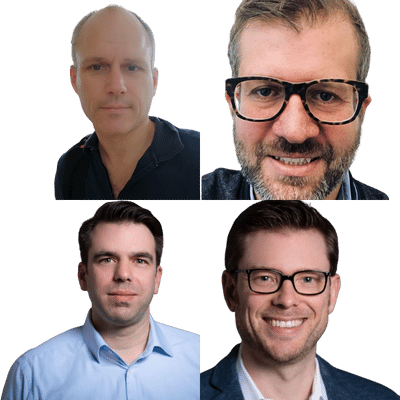From Foresight to Action – How to Leverage Future Insights To Create Value in Strategy and Innovation
Nicolas Reinke, Global Strategic Insights Senior Director at Mondelēz International, Esteban Martinez, Global Director Research & Technology Transformation at Anheuser-Busch InBev, Sebastian Knab, Director of Foresight and Strategy at Creative Dock Group, Tobias Heger, Chief Innovation & Strategy Officer at Creative Dock Group

Foresight is a strategic capability that can help identify challenges and opportunities in the future.

This video is available for members of Innov8rs Community and with the Digital Companion to The Innovator's Handbook 2024.
Would you like access?
Upgrade to dive deeper with the Digital Companion, giving you access to 80+ videos plus additional resources and content. Click here.
Are you a member of Innov8rs Community? This video is available in your content library.
Already purchased? Click here to loginIf done well, the outputs from foresight initiatives inform corporate strategy and innovation. It can give companies a head-start in testing and implementing innovations that deliver value on the short, medium and long term, and boost competitive advantage. Foresight initiatives require time, effort, and resources, so it’s crucial to show how foresight delivers value to the business.
How can you leverage foresight as a valuable tool?
Leveraging Foresight For Future Growth
Mondelez’ mission to lead the future of snacking naturally led them to prioritize foresight. They recognized that the way people choose to eat is constantly changing, with a shift towards convenience and quick snacks. This change is influenced by various factors such as demographics, lifestyle, technology, and time constraints. By understanding these long-term changes, Mondelez can better prepare for the future.
AB InBev’s motivation for prioritizing foresight came after completing a major acquisition and realizing afterwards that their operating model was no longer sustainable. With no further large companies available for acquisition, they needed to focus on organic growth.
This shift in focus was driven by shareholder expectations and the need to deliver organic growth to improve the company’s share price. The company recognized the limitations of their one-year and three-year planning processes, particularly in terms of technology development. Three years was not sufficient for their long-term needs, leading them to embrace foresight as a way to anticipate and prepare for future challenges and growth opportunities.
Winning In Future Worlds
At AB InBev, they assembled a small but diverse group of people within the R&D centre. The team embarked on developing 10 moonshots to discover technological and business opportunities. They narrowed down the scope and followed a process that included defining multiple scenarios for mutually exclusive worldviews. This allowed them to explore different possibilities and opportunities within these scenarios, continuously asking themselves what-if-questions.
After validating and selecting the 5 most relevant moonshots, the team at AB InBev focused on converting these into technology roadmaps. They started by defining what it meant for AB InBev to win in these future worlds and identifying the opportunities within each moonshot that they should be pursuing. They then assessed the technical and knowledge gaps that needed to be addressed to achieve these goals. This transition from foresight to action demonstrates the importance of not just envisioning the future, but also planning and taking steps to have an impact in the present.
Building Common Views for Better Decision Making
To embrace foresight in the first place, companies must convince senior leadership of its importance. To gain their leadership’s support, the team at Mondelez spent time learning from best-in-class companies outside their competitive set, particularly industries with longer economic investment and development cycles. It was challenging but crucial to create a recommendation internally that showcased the impact and outcomes of embracing foresight, tailored to their unique company context.
Mondelez ensured there was a clear understanding that foresight was not just about inspiration but also about making informed business decisions. They focused on learning what was already being done within their company and discovered inconsistent approaches to foresight, as well as fragmented information and intelligence sources across different functional areas and markets.
They recognized the need to connect these learnings and insights to understand how different functions and markets could react to demographic changes and trends. To address this issue, they decided to build an operational model create their own proprietary framework.
Leveraging scenario exercises towards strategic areas, they were able to address the fragmentation of resources and investments, which hindered the alignment of agendas across functions and markets. By taking control of the narrative about the future and building common views and narratives, they aimed to overcome this challenge and enable better decision-making throughout the company.

